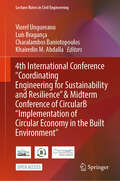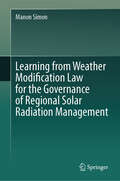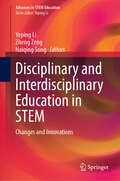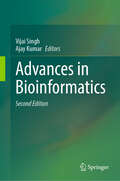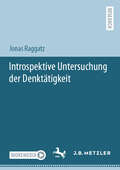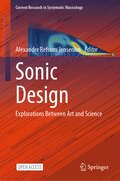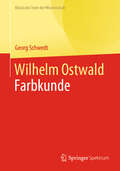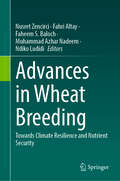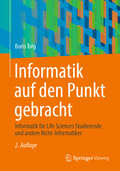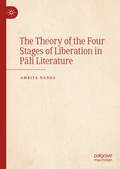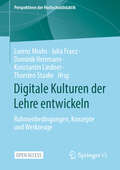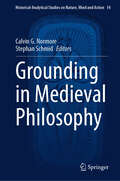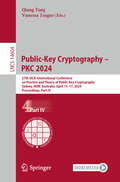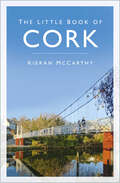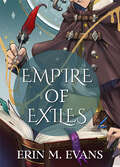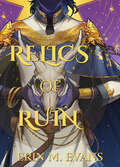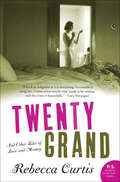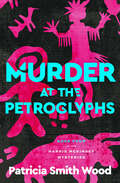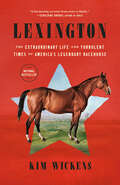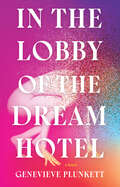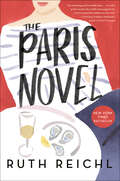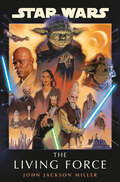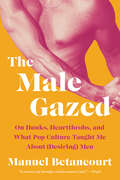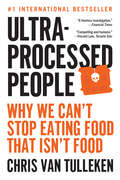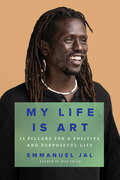- Table View
- List View
4th International Conference "Coordinating Engineering for Sustainability and Resilience" & Midterm Conference of CircularB “Implementation of Circular Economy in the Built Environment” (Lecture Notes in Civil Engineering #489)
by Viorel Ungureanu Luís Bragança Charalambos Baniotopoulos Khairedin M. AbdallaThis open access book gathers the proceedings of the 4th International Conference “Coordinating Engineering for Sustainability and Resilience” (CESARE) & Midterm Conference of CircularB “Implementation of Circular Economy in the Built Environment”, held in Timișoara, Romania, on May 29-31, 2024, as part of the COST Action CA21103. The volume represents the state of the art of sustainability and resilience in modern and future built environment, constructions, and infrastructure, and includes topics such as structural materials and robustness, fire engineering, risk assessment, impact of climate change on the built environment, sustainable resilience of systems in the built environment, smart cities, circular economy, design strategies for product design, integration of renewable energy at building and small urban area scales, restoration & rehabilitation of historical buildings, sustainable infrastructures, wind energy structures, façade engineering, green buildings, and waste management.
Learning from Weather Modification Law for the Governance of Regional Solar Radiation Management
by Manon SimonThis book investigates the role of cloud seeding laws in governing regional solar radiation management (SRM) activities. It challenges the prevailing belief that cloud seeding laws are irrelevant to regional SRM governance and argues for their applicability. Through case studies in Australia, Canada, and the United States, the book highlights the need for legal frameworks that promote cross-scale interactions, stakeholder participation, flexible decision-making, and conflict resolution. It advocates for adopting adaptive governance principles to effectively manage the risks and uncertainties associated with regional SRM interventions. By filling a gap in the existing literature, this book offers valuable insights and recommendations for the governance of regional SRM, shedding light on the potential of cloud seeding laws to inform and shape SRM governance frameworks. It provides a comprehensive analysis of the legal and normative aspects, offering practical guidance for policymakers, researchers, and stakeholders involved in regional SRM initiatives.
Disciplinary and Interdisciplinary Education in STEM: Changes and Innovations (Advances in STEM Education)
by Yeping Li Zheng Zeng Naiqing SongThis book provides an international platform for educators from different STEM disciplines to present, discuss, connect, and develop collaborations in two inter-related ways: (1) sharing and discussing changes and innovations in individual discipline-based education in STEM/STEAM, and (2) sharing and discussing the development of interdisciplinary STEM/STEAM education. Possible relationships and connections between individual disciplines (like mathematics or physics) and STEM education remain under explored and the integration of traditionally individual discipline-based education in STEM education is far from balanced. Efforts to pursue possible connections among traditionally separated individual disciplines in STEM are not only necessary for the importance of deepening and expanding interdisciplinary research and education in STEM, but also for the ever-increasing need of reflecting on and changing how traditional school subjects (like mathematics or physics) can and should be viewed, taught, and learned. Scholars from eight countries/regions provide diverse perspectives and approaches on changes and innovations in STEM disciplinary and interdisciplinary education. Disciplinary and Interdisciplinary Education in STEM will be a great resource to students and researchers in STEM education as well as STEM curriculum developers and teacher educators internationally.
Advances in Bioinformatics
by Vijai Singh Ajay KumarThe second edition of Advances in Bioinformatics presents the latest developments in bioinformatics in gene discovery, genome analysis, genomics, transcriptomics, proteomics, metabolomics, metabolic flux analysis, drug discovery, and drug repurposing. It includes advancements in the applications of bioinformatics in the analysis of non-coding RNA, next-generation sequencing, genome-scale modelling, high throughput drug screening, precision medicine, automation and artificial intelligence, and machine learning. The chapter also summarizes the technologies and concepts that form the basis of this functional genomics approach. Additionally, the book highlights some of the areas in which bioinformatics resources and methods are being developed to support the drug discovery pipeline. The chapter also discusses the role of bioinformatics in modelling and simulations of molecular biology systems in pathways identification and design. It is a valuable source of information for beginners in bioinformatics and students, researchers, scientists, clinicians, practitioners, policymakers, and stakeholders who are interested in harnessing the potential of bioinformatics in biomedical and allied sciences.
Introspektive Untersuchung der Denktätigkeit
by Jonas RaggatzIn diesem Buch wird untersucht, ob es eine eigenständige kognitive Phänomenalität gibt, die nicht auf sinnliche Erfahrungen reduziert werden kann. Um diese zentrale Frage der Kognitiven-Phänomenologie-Debatte introspektiv-empirisch untersuchen zu können, wird einerseits die Methode der Introspektion mit ihren Kritikpunkten und Problemen behandelt, indem historische und zeitgenössische Ansätze introspektiver Forschung sowie deren Kritik dargestellt und evaluiert werden. Andererseits wird eine qualitativ-empirische Studie zur Denktätigkeit durchgeführt, um performativ-agentive Phänomene aufzuzeigen, die als Argumente für eine sensorisch und emotional irreduzible kognitive Phänomenalität interpretiert werden können.
Sonic Design: Explorations Between Art and Science (Current Research in Systematic Musicology #12)
by Alexander Refsum JenseniusThis open access book offers a historical context and an overview of the field's current artistic and scientific research. Sonic design includes the construction and performance of acoustic instruments but also recording, editing, mixing, and synthesizing sounds using analog and digital electronic devices. This book explores sonic design from the perspectives of music theory, music perception, embodied cognition, phenomenology, soundscape studies, acoustics, new interfaces for musical expression, sound and music computing, and music information retrieval. The chapters are selected contributions from an international seminar organized to celebrate the achievements of Professor Rolf Inge Godøy at the University of Oslo. As a composer, researcher, teacher, and supervisor, Professor Godøy has been central in developing a holistic approach to sonic design, from theory to practice. This book offers a comprehensive overview of the field's current state, making it essential reading for students, practitioners, and researchers across a wide range of disciplines.
Wilhelm Ostwald: Farbkunde (Klassische Texte der Wissenschaft)
by Georg SchwedtNachdem Wilhelm Ostwald die Universität Leipzig 1906 wegen anhaltender Streitigkeiten mit der philosophischen Fakultät verlassen hatte, ließ er sich in Großbothen als Privatgelehrter nieder. Hier entwickelte er seine Farbenlehre. 1923, in einem wirtschaftlich und politisch krisenhaften Jahr, erschien seine Farbkunde. Mit diesem Werk wandte er sich an eine breite Zielgruppe – an „Chemiker, Physiker, Naturforscher, Ärzte, Physiologen, Psychologen, Koloristen, Farbtechniker, Drucker, Keramiker, Färber, Weber, Maler, Kunstgewerbler, Musterzeichner, Plakatkünstler und Modisten“. Er stellt zunächst die bisher beschriebenen Farblehren und Theorien kritisch bewertend vor. In weiteren Kapiteln werden das Licht, die Vorgänge des Sehens und besonders ausführlich die Farben beschrieben. Als „Angewandte Farbkunde“ behandelt er die Messung der Farben, physikalisch-chemische und psychophysische Verhältnisse sowie die Farbe als Darstellungsmittel und die Harmonie der Farben mit Beschreibungen des Farbtonkreises, Vorschläge für einen Normenatlas mit praktischen Ausführungsformen. Ostwald schuf damit die Grundlagen für weit verbreitete Anwendungen, die im Kommentarteil ausführlich vorgestellt werden.
Advances in Wheat Breeding: Towards Climate Resilience and Nutrient Security
by Nusret Zencirci Fahri Altay Faheem S. Baloch Muhammad Azhar Nadeem Ndiko LudidiThis edited book addresses the introduction to wheat, advancements in breeding, the contribution of biotechnological approaches, the development of climate-resilient wheat cultivars, and biofortification efforts to create nutrient-rich wheat cultivars.The world faces simultaneous challenges of a growing population and climate change. It is anticipated that the world population will exceed 9 billion by 2050. Meanwhile, climate change significantly impacts agriculture through uneven patterns, expected to worsen in the coming years, resulting in substantial losses due to biotic and abiotic stresses. Wheat, a staple food for millions worldwide, requires more studies to develop climate-resilient cultivars with improved nutritional content. Given these considerations, it is crucial to understand the activities conducted for wheat breeding and address the current gap to ensure an ample food supply for future generations.This book is beneficial for researchers, teachers, agriculturists, biologists, climate change scientists, and organizations involved in wheat breeding. It also serves as a valuable resource for undergraduate, master, and PhD students interested in wheat.
Informatik auf den Punkt gebracht: Informatik für Life Sciences Studierende und andere Nicht-Informatiker
by Boris TolgDieses Lehrbuch richtet sich an Studierende von fachfremden Studiengängen mit Informatikanteilen. Ein besonderer Schwerpunkt liegt dabei auf den sogenannten Lebenswissenschaften, wie Medizintechnik, Rettungsingenieurwesen, Biotechnologie, Umwelttechnik oder Verfahrenstechnik. Das Lehrbuch eignet sich für Leser in Studium und Praxis, die sich einen Einstieg in die Informatik verschaffen wollen. Die Besonderheit dieses Buches liegt in der problembasierten Herangehensweise, sowie der nach verschiedenen Taxonomiestufen konzipierten Übungsaufgaben.
The Theory of the Four Stages of Liberation in Pāli Literature
by Amrita NandaThis book investigates the origins and development of the theory of four stages of liberation in Pāli literature. This theory is an important soteriological cartography in early Buddhism, particularly Theravāda Buddhism. Amrita Nanda challenges the traditional interpretation of the four stages by recognizing the impact of the changing socio-religious factors on the theory’s origins and subsequent development. Based primarily on the Pali literary sources, this study utilizes sometimes-overlooked aspects of these texts. This book first traces the origins of each stage individually; then, it traces the formation of the theory and its subsequent development.
Digitale Kulturen der Lehre entwickeln: Rahmenbedingungen, Konzepte und Werkzeuge (Perspektiven der Hochschuldidaktik)
by Lorenz Mrohs Julia Franz Dominik Herrmann Konstantin Lindner Thorsten StaakeDie Digitalisierung sowie der damit einhergehende Wandel von Gesellschaft und Arbeitsleben verändern die Anforderungen an Hochschulen, Lehrende und Studierende. Dabei entsteht eine neue Kultur digitaler Lehre mit großen Chancen und Herausforderungen für alle Akteursgruppen.Die Beiträge des vorliegenden Open-Access-Sammelbandes beleuchten die Entstehung digitaler Kulturen in der Hochschullehre und stellen neue Konzepte, Gestaltungsmöglichkeiten sowie Evaluationsergebnisse digitaler Lehr-Lern-Wege vor. Vor diesem Hintergrund werden in den Ausführungen auch digitale Werkzeuge und deren Anwendung sowie Weiterentwicklung in den Blick genommen – sowohl für reine Online-Formate als auch für Mischformen aus digitalen und klassischen Lehransätzen.
Grounding in Medieval Philosophy (Historical-Analytical Studies on Nature, Mind and Action #14)
by Calvin G. Normore Stephan SchmidThis book offers a selection of 13 case studies on how the notion of grounding helps illuminate philosophical discussions of our past with a special focus on debates of the Middle Ages. It thereby makes not only the case that the notion of grounding, which has become so widely debated in analytic metaphysics, has a long and venerable tradition, but also shows that this tradition has a lot to teach to contemporary philosophers of grounding. This is because the historical authors discussed in this volume – that is, Aristotle, Fazang, Boethius, Avicenna, Abelard, Aquinas, Scotus, Ockham, Buridan, Suárez, Leibniz, and others – suggested different types of non-efficient-causal explanations which are to be carefully distinguished. This volume illustrates how philosophy and history of philosophy can be mutually illuminating by showing that the terminology developed in the contemporary debate about grounding can help reconstruct philosophical discussions from Antiquity up to the Early Modern Period, and that these very discussions enrich, and in part challenge the contemporary debate about grounding. In this vein, it is an important reading for everyone interested in the history of grounding and the philosophical insights that this history might have left to us.
Public-Key Cryptography – PKC 2024: 27th IACR International Conference on Practice and Theory of Public-Key Cryptography, Sydney, NSW, Australia, April 15–17, 2024, Proceedings, Part IV (Lecture Notes in Computer Science #14604)
by Qiang Tang Vanessa TeagueThe four-volume proceedings set LNCS 14601-14604 constitutes the refereed proceedings of the 27th IACR International Conference on Practice and Theory of Public Key Cryptography, PKC 2024, held in Sydney, NSW, Australia, April 15–17, 2024. The 54 papers included in these proceedings were carefully reviewed and selected from 176 submissions. They focus on all aspects of signatures; attacks; commitments; multiparty computation; zero knowledge proofs; theoretical foundations; isogenies and applications; lattices and applications; Diffie Hellman and applications; encryption; homomorphic encryption; and implementation.
The Little Book of Cork (Little Book Of)
by Kieran McCarthyThe Little Book of Cork is a compendium of fascinating, obscure, strange and entertaining facts about Cork City. Here you will find out about Cork’s buildings and businesses, its proud sporting heritage, its hidden corners and its famous (and occasionally infamous) men and women. Through its bustling thoroughfares and down winding laneways, this book takes the reader on a journey through Cork and its vibrant past, recalling the people and events that shaped this great city.A reliable reference book and a quirky guide, this can be dipped into time and time again to reveal something new about the people, the heritage and the secrets of Cork.
Empire of Exiles (Book of the Usurper #1)
by Erin M. Evans"Detailed and mysterious, a place to explore and relish. Empire of Exiles is highly recommended!”—R.A. Salvatore, author or “The Legend of Drizzt” and the DemonWars novelsThe Imperial Archives holds the treasures of the ten nations that fled the collapse of the world to settle in Semilla behind a wall of salt and iron. When Quill, an apprentice scribe, arrives to request the loan of several artifacts for a client, he’s hoping for a tour and maybe a glimpse of some of the rarer relics the archives’ sorcerous caretakers are rumored to protect.Instead, Quill finds himself a witness to a ghastly murder tangled in present-day politics and the history of the empire—worse, the accused killer is his own shy and scholarly best friend, a very unlikely assassin.Quill’s amateur investigations run afoul of an archivist dodging questions about her buried past, an investigator eyeing Quill’s motives too closely, and threads that lead back to a long-dead usurper—nothing makes sense, and Quill doesn’t know who to trust. But if he can’t find allies, the next victim may be the empire of Semilla itself.This edition includes a brand-new illustrated guide to the peoples of the empire.Praise for Empire of Exiles:"Readers will be drawn in by the memorable cast, vibrantly drawn fantasy cultures, and vivid prose. Epic fantasy fans will be eager to see where the series goes."—Publishers Weekly"An excellent new fantasy series by Evans (The Devil You Know), perfect for fans of Katherine Addison or those who enjoy slow-burning and complex court intrigue."—Library Journal"From the rich world building as these remnants of humanity hide from changelings behind a Salt Wall, to the interesting culture, a unique magic system, and a variety of humanoids, readers will be delighted that nothing is predictable in this intriguing story."—Booklist"Empire of Exiles by Erin M. Evans is a triumph of fantasy, murder mystery, and political thriller that handles grief, PTSD, panic, and anxiety disorder with tact.... I cannot wait to read what Evans has cooking up for the follow-up."—Geekly Inc“Empire of Exiles has it all: characters I love, intertwined compelling mysteries in the past and present, plot twists that keep coming, and a unique and fascinating world and magic system! One of my favorite books of the year!"—Melissa Caruso, author of the Swords and Fire Trilogy
Relics of Ruin (Book of the Usurper #2)
by Erin M. Evans"Evans skillfully expands the world building while exploring the character depths, with delightful twists that resolve some conflicts while setting up the next book." — BooklistWithin the Imperial Archives, the Chapel of the Skeleton Saints holds the ornamented relics of the Orozhandi protectorate’s holy sorcerers.And the bones of one misplaced murder victim.Saint Hazaunu of the Wool has stood sentinel in the chapel for nearly a century—but the bones found beneath the floor of a crime scene are inarguably the saint’s. While the first question Archivist Superior Amadea Gintanas must ask is how were the bones stolen, the second is who exactly is standing in the saint’s niche? And how did they get there?All eyes go to Tunuk, the lonely bone specialist of the Imperial Archives—who isn’t talking. Tunuk knows something happened to the saint twelve years ago—but not who took her place or why. But without answers, Tunuk’s the obvious suspect for both the murder and the theft—something neither Amadea nor her new apprentice, Quill, believe.While tracing the rumors of a burgeoning attack from beyond the Salt Wall and keeping secrets that could shake the empire, Quill and Amadea must shine a light on a past Tunuk would rather keep in shadow. But when the bones of the saint are stolen again and a saboteur strikes too close to home, all three of them will have to reckon with the possibility all these perils are intimately connected.This edition includes a brand-new illustrated guide to the peoples of the empire.Praise for Relics of Ruin:"Relics of Ruin was a welcome return to a world I have grown very fond of. ... it was another twisty mystery that delved into the complicated politics and history of the empire..." — Fantasy Book Critic"Relics of Ruins is astounding, a worthy continuation to what is amping up to be a new favorite series." — Witty and Sarcastic Book Club"Relics of Ruin was another captivating read in this series that left me wanting to keep peeling away the fantastic layers of this story.... I think its going to be one heck of a thrilling ending that cements the Books of the Usurper as a must-read fantasy series for every fantasy fan out there." — Out of This World Reviews
Twenty Grand: And Other Tales of Love and Money
by Rebecca CurtisIn this dazzling literary debut, Rebecca Curtis displays the gifts that make her one of the most talented writers of her generation. Her characters—young women struggling to find happiness, love, success, security, and adventure—wait tables, run away from home, fall for married men, betray their friends, and find themselves betrayed as well.In "Hungry Self," a young waitress descends into the basement of a seemingly ordinary Chinese restaurant; in "Twenty Grand," a young wife tries to recover her lost fortune; in "Monsters," one family's paranoia leads to a sacrifice; and in "The Witches," an innocent swim on prom night proves more dangerous than anyone could have imagined. With elegant prose and a wicked sense of humor, these stories reveal Curtis's provocative and uncompromising view of life, one that makes her writing so poignant and irresistible.
Murder at the Petroglyphs (Harrie McKinsey Mysteries #Vol. 4)
by Patricia Smith WoodWhen the police and FBI are baffled by a corpse found at a national park, they must rely on a psychic amateur sleuth to solve the mystery. The spirits of Native American ancestors are said to inhabit the sacred rocks at Petroglyph National Monument. So when an unidentified body is found there, everyone from the local police to the FBI are up in arms. But no one can figure out who the victim is until the CIA steps in, claiming that there is one person who might have answers: Harrie McKinsey. Now it seems everyone is keeping an eye on the infamous sleuth Harrie, even her FBI agent husband, DJ, who is mystified by his wife&’s connection to the dead man. It&’s going to be up to Harrie to use her psychic intuition and savvy sleuthing skills to find the killer—unless, of course, he gets her first . . . &“Readers will slip right into this engaging tale of murder, camaraderie, complications and clever crime solving.&” —Anne Hillerman, New York Times–bestselling author of the Leaphorn, Chee, Manuelito mystery series.
Lexington: The Extraordinary Life and Turbulent Times of America's Legendary Racehorse
by Kim WickensNATIONAL BESTSELLER • &“A vivid portrait of America&’s greatest stallion, the larger-than-life men who raced and bred him, and the dramatic times in which they lived.&”—Geraldine Brooks, author of HorseThe powerful true story of the champion Thoroughbred racehorse who gained international fame in the tumultuous Civil War–era South, and became the most successful sire in American racing historyThe early days of American horse racing were grueling. Four-mile races, run two or three times in succession, were the norm, rewarding horses who brandished the ideal combination of stamina and speed. The stallion Lexington, named after the city in Kentucky where he was born, possessed these winning qualities, which pioneering Americans prized. Lexington shattered the world speed record for a four-mile race, showing a war-torn nation that the extraordinary was possible even in those perilous times. He would continue his winning career until deteriorating eyesight forced his retirement in 1855. But once his groundbreaking achievements as a racehorse ended, his role as a sire began. Horses from his bloodline won more money than the offspring of any other Thoroughbred—an annual success that led Lexington to be named America&’s leading sire an unprecedented sixteen times. Yet with the Civil War raging, Lexington&’s years at a Kentucky stud farm were far from idyllic. Confederate soldiers ran amok, looting freely and kidnapping horses from the top stables. They soon focused on the prized Lexington and his valuable progeny. Kim Wickens, a lawyer and dressage rider, became fascinated by this legendary horse when she learned that twelve of Thoroughbred racing's thirteen Triple Crown winners descended from Lexington. Wickens spent years meticulously researching the horse and his legacy—and with Lexington, she presents an absorbing, exciting account that transports readers back to the raucous beginning of American horse racing and introduces them to the stallion at its heart.
In the Lobby of the Dream Hotel: A Novel
by Genevieve PlunkettFinalist for the Vermont Book AwardsA young mother finds herself caught between a love affair and the wrath of her husband, who will do anything to put an end to it—even use his wife's bipolar diagnosis against herWhen faced with newfound feelings for Theo, the drummer of her band, married young mother Portia must decide whether to follow her heart or question her sanity. Going off her medication feels like waking up for the first time. But could this clarity be harmless daydreaming, or a symptom of something more serious?Portia&’s husband, a well-respected prosecutor in their small Vermont town, is convinced of the latter. He retaliates, initiating an intervention, claiming that Portia&’s behavior is proof of her bipolar disorder. With lawyer-like cunning, he uses elements from her past to break her resolve until she agrees to being committed to a psychiatric hospital. In the hospital, Portia&’s sense of reality is tested, and hard truths about her marriage, her love for Theo, and her most vulnerable hopes and desires are revealed.In the Lobby of the Dream Hotel is a potent and at times devastating story of stark tenderness. Written like a dream, this novel brings us toward new understandings of the flawed, yearning, multifaceted self.
The Paris Novel: The Gorgeously Uplifting New Novel About Living - And Eating - Deliciously
by Ruth ReichlNEW YORK TIMES BESTSELLER • A &“mouthwatering&” (The New York Times) adventure through the food, art, and fashion scenes of 1980s Paris—from the bestselling author of Save Me the Plums and Delicious!&“An enchanting and irresistible feast . . . As with a perfect meal in the world&’s most magical city, I never wanted this sublime novel to end.&”—Cynthia D&’Aprix Sweeney, author of Good CompanyStella reached for an oyster, tipped her head, and tossed it back. It was cool and slippery, the flavor so briny it was like diving into the ocean. Oysters, she thought. Where have they been all my life?When her estranged mother dies, Stella is left with an unusual inheritance: a one-way plane ticket and a note reading &“Go to Paris.&” Stella is hardly cut out for adventure; a traumatic childhood has kept her confined to the strict routines of her comfort zone. But when her boss encourages her to take time off, Stella resigns herself to honoring her mother&’s last wishes.Alone in a foreign city, Stella falls into old habits, living cautiously and frugally. Then she stumbles across a vintage store, where she tries on a fabulous Dior dress. The shopkeeper insists that this dress was meant for Stella and for the first time in her life Stella does something impulsive. She buys the dress—and embarks on an adventure.Her first stop: the iconic brasserie Les Deux Magots, where Stella tastes her first oysters and then meets an octogenarian art collector who decides to take her under his wing. As Jules introduces Stella to a veritable who&’s who of the Paris literary, art, and culinary worlds, she begins to understand what it might mean to live a larger life.As weeks—and many decadent meals—go by, Stella ends up living as a &“tumbleweed&” at famed bookstore Shakespeare & Company, uncovers a hundred-year-old mystery in a Manet painting, and discovers a passion for food that may be connected to her past. A feast for the senses, this novel is a testament to living deliciously, taking chances, and finding your true home.
Star Wars: The Living Force (Star Wars)
by John Jackson MillerIn the year before The Phantom Menace, Yoda, Mace Windu, and the entire Jedi Council confront a galaxy on the brink of change. The Jedi have always traveled the stars, defending peace and justice across the galaxy. But the galaxy is changing, and the Jedi Order along with it. More and more, the Order finds itself focused on the future of the Republic, secluded on Coruscant, where the twelve members of the Jedi Council weigh crises on a galactic scale.As yet another Jedi Outpost left over from the Republic&’s golden age is set to be decommissioned on the planet Kwenn, Qui-Gon Jinn challenges the Council about the Order&’s increasing isolation. Mace Windu suggests a bold response: All twelve Jedi Masters will embark on a goodwill mission to help the planet and to remind the people of the galaxy that the Jedi remain as stalwart and present as they have been across the ages.But the arrival of the Jedi leadership is not seen by all as a cause for celebration. In the increasing absence of the Jedi, warring pirate factions have infested the sector. To maintain their dominance, the pirates unite, intent on assassinating the Council members. And they are willing to destroy countless innocent lives to secure their power.Cut off from Coruscant, the Jedi Masters must reckon with an unwelcome truth: While no one thinks more about the future than the Jedi Council, nobody needs their help more than those living in the present.
The Male Gazed: On Hunks, Heartthrobs, and What Pop Culture Taught Me About (Desiring) Men
by Manuel BetancourtFeaturing deep dives into thirst traps, drag queens, Antonio Banderas, and telenovelas—all in the service of helping us reframe how we talk about (desiring) men—this insightful memoir-in-essays is as much a coming of age as a coming out bookManuel Betancourt has long lustfully coveted masculinity—in part because he so lacked it. As a child in Bogotá, Colombia, he grew up with the social pressure to appear strong, manly, and, ultimately, straight. And yet in the films and television he avidly watched, Betancourt saw glimmers of different possibilities. From the stars of telenovelas and the princes of Disney films to pop sensation Ricky Martin and teen heartthrobs in shows like Saved By the Bell, he continually found himself asking: Do I want him or do I want to be him?The Male Gazed grapples with the thrall of masculinity, examining its frailty and its attendant anxieties even as it focuses on its erotic potential. Masculinity, Betancourt suggests, isn&’t suddenly ripe for deconstruction—or even outright destruction—amid so much talk about its inherent toxicity. Looking back over decades&’ worth of pop culture&’s attempts to codify and reframe what men can be, wear, do, and desire, this book establishes that to gaze at men is still a subversive act.Written in the spirit of Hanif Abdurraqib and Olivia Laing, The Male Gazed mingles personal anecdotes with cultural criticism to offer an exploration of intimacy, homoeroticism, and the danger of internalizing too many toxic ideas about masculinity as a gay man.
Ultra-Processed People: Why We Can't Stop Eating Food That Isn't Food
by Chris van TullekenTHE #1 INTERNATIONAL BESTSELLER • LONGLISTED FOR THE BAILLIE GIFFORD PRIZE FOR NONFICTION • The bestselling and eye-opening investigation into the science, economics, history and impact of ultra-processed food.With a new Afterword by the author.Named a Best Book of the Year by NPR • The Economist • The Times • The New Yorker • Smithsonian • Daily Mail • The Guardian • Financial Times • and more!It's not you, it's the food.How much of our daily caloric intake comes from ingesting substances that, technically speaking, do not meet traditional definitions of &“food&”? Chances are, if you&’re eating something that came wrapped in plastic and contains a funky ingredient you don&’t have in your kitchen, it's most likely—almost definitely—ultra-processed food, or UPF. More than the principal obstacle to &“eating right,&” UPF has been linked to metabolic disease, depression, inflammation, anxiety, and cancer, while the production, distribution, and disposal of UPF and related products globally is known to cause devastating environmental damage. At the same time, UPF represents the dominant, nigh-unavoidable food culture for millions upon millions of eaters.Medical doctor and broadcaster Chris van Tulleken has spent his career trying to reframe the conversation around eating right, balancing the hard (and sometimes shocking) facts about what we're putting into our bodies with empathy for the natural desire to keep eating what we like, have time for, and can afford. As he argues in this book, we are all participants in an experiment we didn't consent to, one to determine how to get us to buy as much ultra-processed food as possible. It&’s not as simple as stumbling across the right diet trend, finding time to meal plan, or avoiding over-indulging in sugar, fat, or carbs or any other culprit. Nor is it a matter of individual will. It&’s about learning to live in &“the third age of eating&”—defined by the overwhelming abundance of ultra-processed eating options—and arming yourself with the simple and not-so-simple facts that will help you make the choices that are right for you.
My Life Is Art: 11 Pillars for a Positive and Purposeful Life
by Emmanuel JalDrawing on lessons from his remarkable life, former child soldier turned activist, author, entrepreneur, and international recording artist Emmanuel Jal provides his eleven pillars for overcoming adversity and living a life of purpose&“Who owns your mind?&” Beginning with this provocative question, Emmanuel Jal invites readers to claim ownership over the narratives that define their lives in order to become a force for good in the world.As a child growing up in South Sudan, Jal witnessed atrocities perpetrated against his family and community. These actions drove him to become a child soldier in a vicious civil war. Hunger, isolation, and the ever-present specter of death in battle attended his every moment. Yet his greatest challenge did not come from outside; it arose from within, from the corrosive nature of hopelessness, trauma, and narratives of victimization.Rather than succumb to these forces of negativity, Jal turned his life&’s challenges into opportunities by utilizing a comprehensive framework he developed around eleven pillars of support. These pillars can be utilized individually or as a unit to help build a durable internal structure that allows anyone to overcome adversity, regain joy and gratitude, and live a life of purpose that enriches the greater community.
